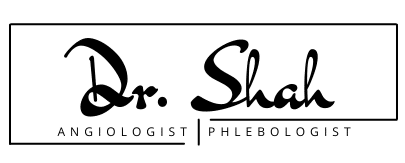Treatment
scleroterapy
what is sclerotherapy?
Sclerotherapy is a minimally invasive procedure used to treat both varicose veins and spider veins. This procedure involves small injections of a sclerosing medication using a very fine, thin needle. Sclerosing medication irritates the venous mucosa, which leads to destruction and absorption by the body of the damaged vessels, and the blood is redirected to healthy veins.
Why do varicose veins need treatment?
When people think of varicose and spider veins, they often imagine a cosmetic problem.
Тези увредени вени са непривлекателни, но също така са показател за по-сериозен проблем, наречен хронична венозна недостатъчност.
Целта на лечението е да damaged veins are sealed, where by blood is redirected into healthy veins. Treating these conditions helps to improve the overall health of the veins and therefore improve the function of the circulatory system.
Varicose veins also have potential for complications such as deep vein thrombosis, skin discoloration, varicose vein bleeding, skin ulcers (open wounds) and thrombophlebitis.
when is sclerotherapy the ideal treatment?
Sclerotherapy is a treatment used to eliminate small to medium varicose veins and spider veins. It can be performed on patients who have had previous vein treatments, who have recurrence of varicose veins, or those who have residual veins after vein ablation or phlebectomy. This is an ideal treatment for targeting the root cause of varicose and spider veins seen on the surface of the skin. Also this procedure can be performed simultaneously with vein ablation or after it. Sclerotherapy is not suitable for women who are pregnant or breastfeeding.

what to expect from the procedure?
There are two types of sclerotherapy: surface sclerotherapy and ultrasound sclerotherapy. Both versions of this procedure are non-surgical and minimally invasive.
Sclerotherapy only takes about 30-40 minutes. A very small needle is used to inject a special drug into the diseased vein to cause the vein to spasm and constrict, cutting off the blood supply so that the vein can be resorbed into the body. During the procedure, some patients experience discomfort and/or cramping for a few seconds to a few minutes after injection, especially when a large number of veins are being treated.
After that, the area is bandaged with a compression bandage and a compression socks is applied, which helps to restore speed and reduce the impact of side effects.After the procedure, it is necessary to walk around for about 20-30 minutes, after which you can continue your day as usual.
surface sclerotherapy
Superficial sclerotherapy is performed on small spider veins, small to medium varicose veins, and other small, damaged vessels visible on the surface of the skin. This is a more cosmetic procedure. If you do not seek further treatment for the underlying condition that caused the arachnids образнитеveins, they are likely to return, despite successful treatment with sclerotherapy.
Sclerotherapy under ultrasound control
Ultrasound sclerotherapy uses ultrasound technology to pinpoint problem veins, allowing accurate treatment of both bulging, visible on the surface, but also damaged veins deeper in the legs. Ultrasound helps see the venous structures so that treatment can be more effectively applied. This type of sclerotherapy is used and after venous ablations, the remaining dilated spider veins are removed.
advantages of sclerotherapy
High success rate
Removes veins under the surface of the skin
Treats the root cause of spider and varicose veins
Office-based procedure
Minimally invasive procedure
No hospital stay
No anaesthesia needed
You can immediately return to your daily routine
The Recovery
Regardless of which type of sclerotherapy is performed, the recovery is essentially the same. You can go back to your regular activities as soon as the procedure is over, and you can even go home. However, you should avoid exertion for a few days. The pressure dressing and compression sock can be removed to shower after 24 hours. You should wear a compression sock for several days after the procedure to speed healing and reduce side effects.
what are the side effects?
Patients may experience bruising, swelling, itching, redness on or around the treated veins. These symptoms are temporary and subsid еindependently within a few days to a few weeks. There is also minimal risk of DVT (deep vein thrombosis), allergic reaction or phlebitis (inflammation of the vein).
Dr Shah will discuss with you any additional risks arising from your individual health condition when drawing up a treatment plan and again before the procedure itself.
